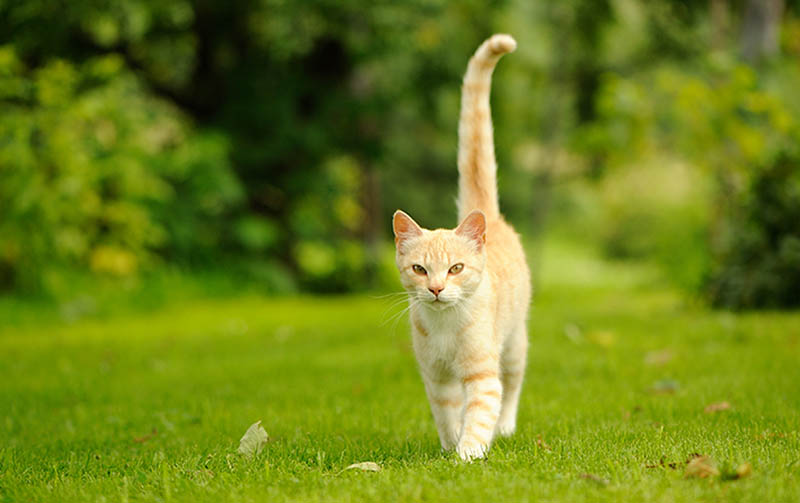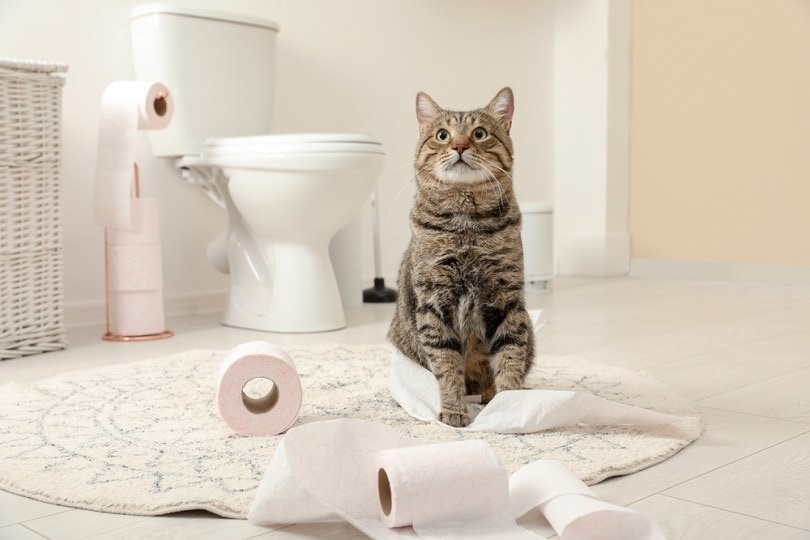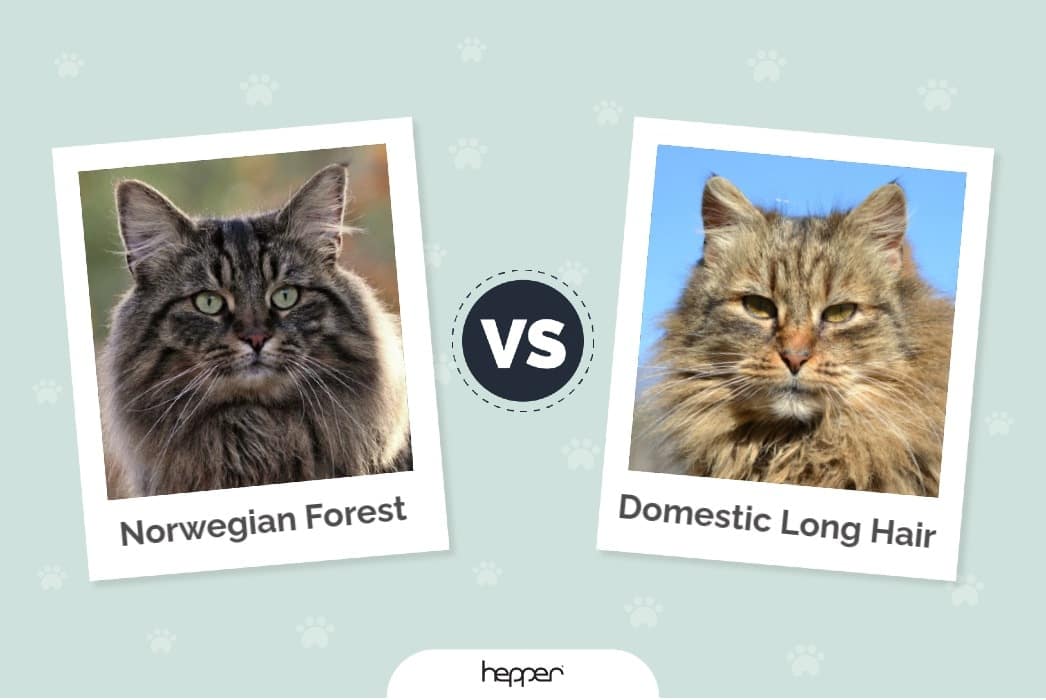Why Do Cats Roll Around on Their Backs? 5 Typical Reasons

Updated on
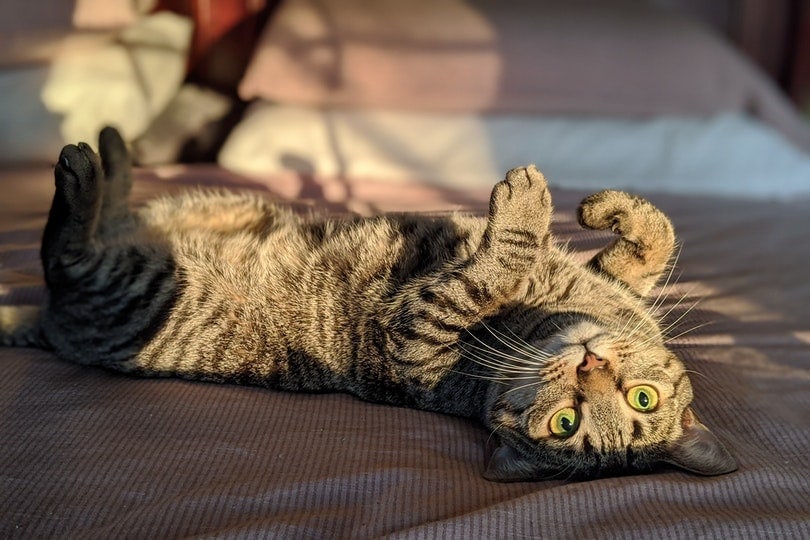
Just as we humans do, our pet cats express themselves through body language. There are many physical cues of how a cat is feeling, such as a vertically raised tail held high in the air that indicates a cat is feeling comfortable and open to interaction. But what does it mean when a cat suddenly throws itself down and rolls around on its back?
We’ll provide you with a few reasons why cats roll on their backs, so you have a better idea of what your cat is trying to convey. One thing to keep in mind is that no single sign or indicator of a cat’s body language is a for-sure thing. Therefore, it’s best to proceed with caution when interacting with a cat, and especially one you don’t know.
For example, a cat exposing its belly is not always a sign he wants his belly rubbed, as the belly is the most sensitive part of a cat. If you were to misread that body language as an invitation to rub a cat’s belly, you may end up with some serious cat scratches that require medical attention. Just be careful and use common sense when trying to interpret a cat’s body language!
Now we’ll proceed with the five main reasons cats roll around on their backs.
The 5 Reasons Why Cats Roll Around on The Ground
1. To Scratch Their Backs
When a cat has an itch on its back, it can’t reach that area with its feet to relieve the “cat-scratch fever.” It’s not uncommon for cats to throw themselves down on the ground and roll over on their backs to give themselves a good scratching. Like other animals, cats can suffer from dry skin and have parasites living in their fur like fleas and mites. All these things can trigger skin allergies and cause some serious itchiness.
If your cat appears to be uncomfortable when he’s on his back writhing about, take a good look at his fur and skin. Check all areas of your cat’s body, including the back, legs, rump, neck, face, and ears for signs of skin dryness or parasites.
If you discover fleas or mites in the fur, contact your veterinarian for some advice. Your vet may ask you to bring your cat in for an examination or you may be told what products to use to get rid of those tiny little pests that are causing him discomfort.
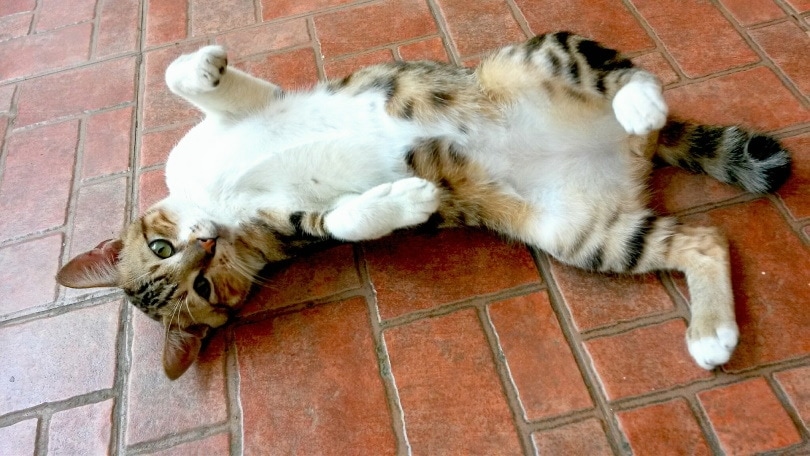
2. To Seek Attention
A cat that’s rolling around on its back may be sending the signal that it wants attention and is open to interaction. Unlike a dog that will roll over on its back to get a belly rub, a cat isn’t usually that submissive.
Cats often roll around on their backs to show people and other animals they are feeling social and friendly without necessarily wanting to be touched. A cat that’s rolling on its back to show he is feeling social will often rub his head on the ground while moving it all around and purring loudly.
It’s obvious that a cat is feeling social when it drops to the ground and rolls around and purrs a lot when meeting you. You must admit that your heart melts a little every time you witness this endearing cat behavior because it is very cute!
3. To Stretch Its Muscles
Like us humans, cats need to stretch their muscles now and then, and they do this in many ways including laying on their backs and rolling around. This behavior is most commonly done when a cat first awakens from sleep.
You may have seen your cat wake up from a nap and flip over on its back and roll around while stretching its back, legs, and neck. If you think your cat is simply stretching his muscles when rolling around on his back, it’s best to let him be. He may get angry if you attempt to touch him when he’s doing this, so beware! It’s best to wait until your cat is finished stretching before petting him or patting your little buddy on the head to say hello.
- Related Read: Why Do Cats Arch Their Back? 5 Reasons for This Behavior
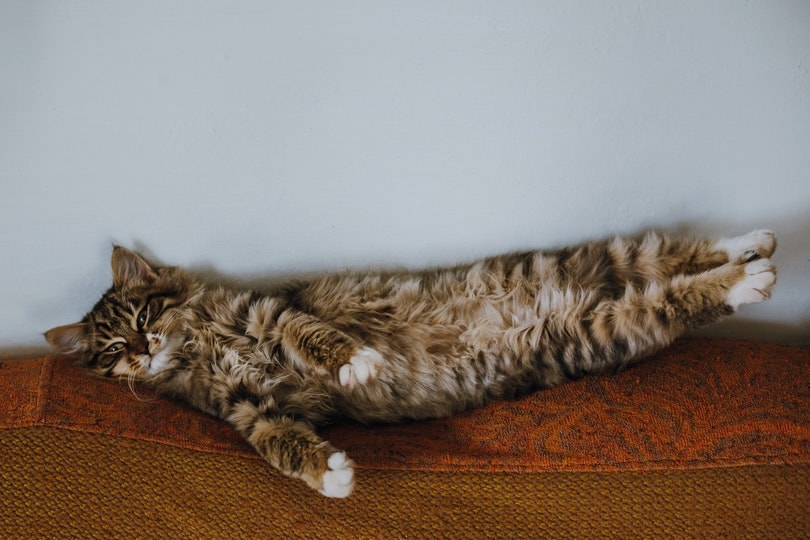
4. To Attract the Opposite Sex
Sometimes cats roll around on their backs when outside to signal to other cats that they’re interested in mating. Female cats exhibit this behavior to send their pheromones to male cats in the area. These “chemical messages” are sent via tiny glands located on different parts of the cat’s body, including the head, back, and tail.
If you have an unspayed female cat that goes outdoors, she will send these chemical messages to male cats in your neighborhood every time she goes into heat. While humans can’t smell cat pheromones, male cats sure can, and they can smell them from miles away. If you don’t want kittens, you should get your female cat spayed as soon as possible!
5. To Send the Message It’s Time to Play
When feeling frisky and playful, cats often throw themselves down on the ground and roll around on their backs. They can exhibit this behavior with humans, other cats, and even dogs.
A pet cat may roll around on his back when he sees his human family gather to play together. Cats know when their humans are having fun by watching their body language and listening to their speech. For example, if your family heads outside to kick around a ball, your pet cat may show you that he wants in on the action, too, by rolling around on his back and acting goofy.
You can find out for sure if your cat is playful when rolling around on his back by simply tossing him a small cat toy. If he proceeds to play with the toy by swatting it around and biting it, he is surely in a playful mood.
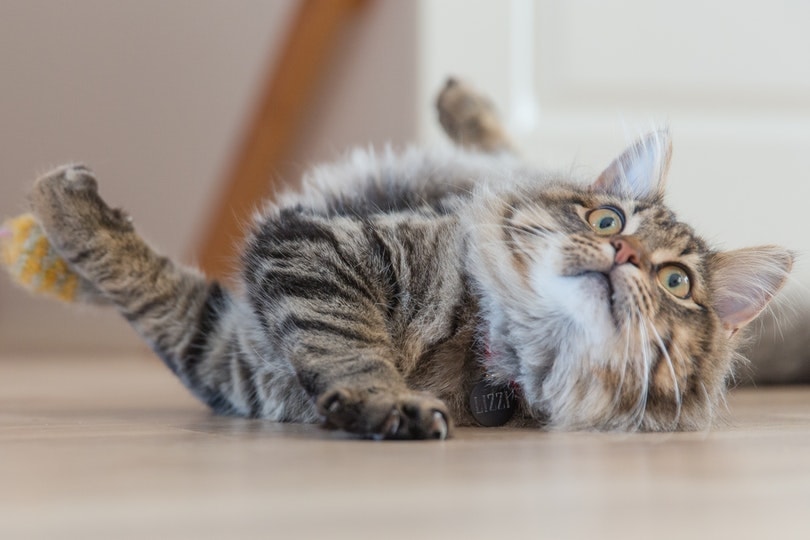
Conclusion
Cats roll around on their backs for many reasons. This feline behavior can be a sign of joy, contentment, or irritation. It can also be a sign that a female cat is ready to mate or that a cat of either sex wants to play. Pay close attention to your cat the next time it rolls around on its back to see if you can tell what message your pet is trying to send!
See Also:
- Is My Cat Fat or Pregnant? How to Tell (With Pictures)
- How Often Do Cats Pee? What’s Normal? (Vet Answer)
Featured Image Credit: Dennis Perreault, Pexels


